Which Wineglass Is Right for Me?
.jpg?width=1600&height=900&name=WoW%20Table%20(2).jpg)
Guests know they’re in for a good time when they arrive to The Chopping Block for a wine class and see an array of glasses – whites, reds, flutes, sometimes even copitas and coupes – glittering and awaiting the evening’s fun. But – guests often ask - does the wine glass really affect the flavor of a wine? In a word, yes.
.jpg?width=630&height=600&name=WoW%20Table%20(2).jpg)
Look at all of the glasses we use for our World of Wine series!
The Top of the Line for Wine
In 1971, when Claus Riedel (REE-dle) energized his family’s centuries-old business by designing crystal stemware specific to grapes, the wine world woke up to the importance of glass design. I have had the opportunity to meet with three generations of Riedels and am astounded by nuances revealed when tasting wine in its own designated Riedel glass. At home, however, inevitable breakage and cost per stem would suck all the joy out of my wine drinking. If you see exemplary wine glasses in your future, however, a relatively affordable set is Riedel’s 8 Piece Wine Friendly Glasses, about $160 at Chicagoland housewares stores and online. Another producer, favored by restaurateurs for sturdiness and affordability, is Spiegelau (SCHPEE-gel-lau).
Wine Glass Anatomy
To choose wine glassware, keep these essentials in mind:
A stemmed wineglass has three parts: the stem with base, the bowl, and the lip. The stem protects wine temperature from your hand’s heat and the wine’s face (appearance) from your messy fingerprints. Always hold the glass by the stem, or for added cool points, by the base (tho’ this takes some practice).
The bowl has two sections: the bottom holds wine, the top holds aroma. When you are served a glass that’s only 2/3-full, you’re not being gypped! The empty space allows wine to oxygenate (‘breathe’ in winespeak) when swirled. Swirling also seasons the glass, so you can enjoy the aroma’s development, even when the wine is long gone.
The lip directs the wine’s aroma to your nose. And here you thought it was to direct the wine to your mouth!
White wine glasses are small because you want to finish the wine while it’s still cool. They are also oval rather than round, sometimes with the lip angled inward, to channel the wine’s relatively delicate aroma directly to your nose.
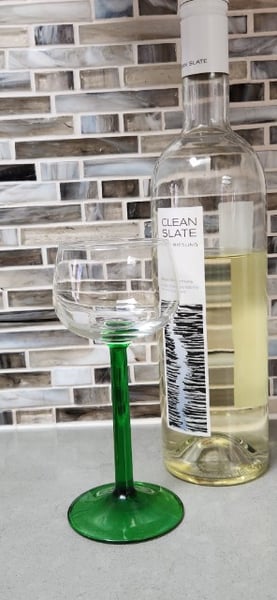 This traditional glass from Germany’s Rhine has a small bowl to keep the wine cool and green stem to enhance the wine’s appearance.
This traditional glass from Germany’s Rhine has a small bowl to keep the wine cool and green stem to enhance the wine’s appearance.
Red wine glasses are big and round. Because red wine absorbs organic compounds in the coloring process, reds need more space and encouragement to breathe. Swirl the wine with enough gusto to coat the glass, but not so much as to slop wine on your expensive outfit. (A wardrobe of wine-colored clothes is my remedy.)
Sparkling wine glasses have changed dramatically in fashion. The original cup-shaped coupe is said to be modelled after Marie Antoinette’s breast. While a colorful story, coupes fell from grace because they lost a bubbly wine’s most important feature – the bubbles!
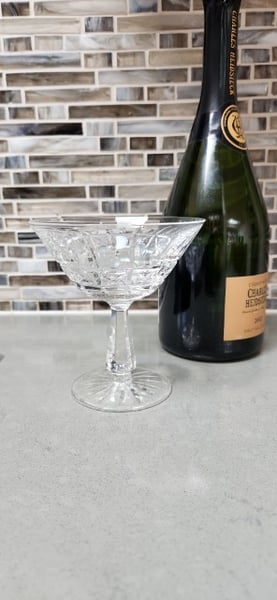 This antique coupe is no longer fashionable but it sure is pretty!
This antique coupe is no longer fashionable but it sure is pretty!
Next came slender tulip- or flute-shaped glasses, with the most direct line from wine to nose. (In this girl’s opinion, they are also the most direct line to a restaurateur’s profit, holding a scant 3 to 4 ounces.) Today, many restaurants serve sparkling wine in white wine glasses, to allow the wine more space to breathe (and to reduce the labor and cost of washing and breaking delicate glassware).
Fortified wine, like Port or Sherry, has declined in popularity, so specific glasses are rare, unless you’re sipping Fino Sherry from a copita (small white wine glass) at one of Chicagoland’s tapas bars.
Do I Need Them All?
In a word, no. For everyday enjoyment, decide on your preferred size and shape and stick with it for all wine. After all, wine geeks at the apotheosis of geekiness, i.e., when sitting their tasting exams, use just one standard glass for all wines.
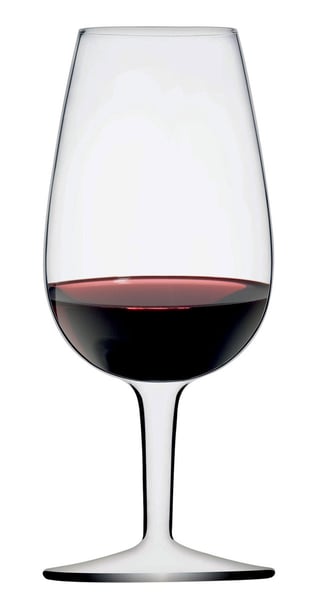 Here’s the glass you’ll use when sitting your Master Sommelier Exam!
Here’s the glass you’ll use when sitting your Master Sommelier Exam!
Photo credit: Wineware.co.uk
For everyday enjoyment of white and reds, I opt for a sturdy 8-ounce glass (to hold 5-ounces of wine), beginning at about $5 per stem at local houseware stores, easy to wash by hand or machine. Affordable sets of white, red and sparkling are also available. For an earth-friendly boost, I watch for glasses that match my own at 2nd-hand stores such as Goodwill, about $1 per stem.
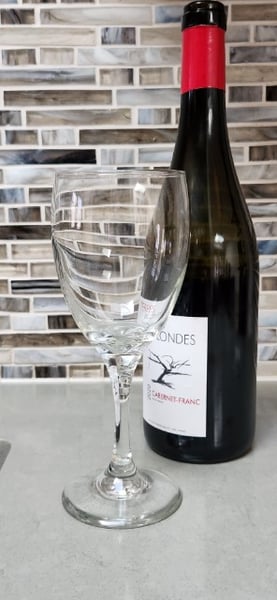
Here’s my standard glass for white, red & often bubbly.
Form follows Function
Louis Sullivan, Architect of the Chicago School & “father of skyscrapers”, 1856 – 1924
Choose glassware that fits your lifestyle. The first requirement of a wine glass is to be clean, free of aroma and smudges. Since fine crystal won’t withstand the dishwasher, what’s your tolerance for handwashing glassware, especially when the occasional slip costs $25 and up per stem?
If glasses are handwashed, it’s best to allow time and space for air drying. Glasses easily attract aromas from laundry detergent, dyes, and paper towel, which often aren’t evident until liquid hits the glass and your wine is spoiled. If air drying isn’t possible, use a detergent- and lint-free cloth to dry, never paper towel.
What about Stemless Glasses?
Stemless glasses are popular because they need less storage room and they’re hard to tip over. My beef is that they’re covered with fingerprints within minutes of use. If you prefer a stemless glass, try the classic French bistro glass, similar to a juice glass, with straight sides that are easier to hold near the bottom.
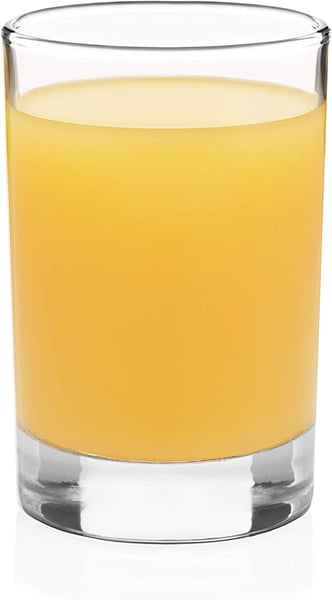
These glasses with their heavy base are really hard to tip over!
Photo credit: Amazon.com | Libbey Heavy Base Juice Glasses, 5.5-ounce, Set of 8: Mixed Drinkware Sets
Join us to sample a range of glassware and the wine that’s in them as you Unlock the Secrets of Wine on Friday, April 21 at 6:30pm at Lincoln Square. We’ll taste five wines complemented by wine-friendly noshes, as we practice tasting techniques that wine pro’s use to get the most out of every sip.

